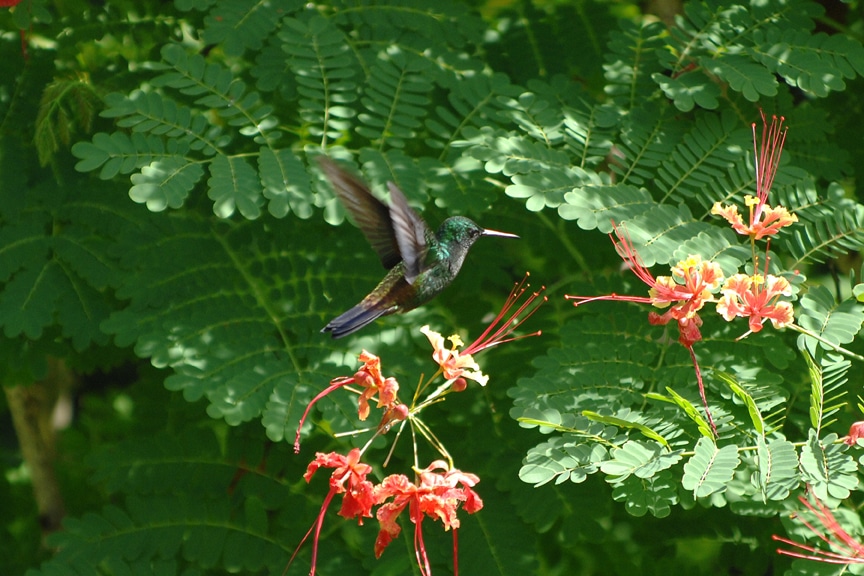Tobago Bird Watching
At 6:30 a.m. the sun is already hot as our group of three novice birders follow, bleary-eyed, in the footsteps of Newton George, Tobago's birding guide-extraordinaire. Leaving the hillsides blanketed in lime-green ferns, we reach the trailhead of Gilpin Trace, where it is instantly cooler under the forest's canopy. The trail cuts through more than two miles of the isle's northeastern Main Ridge Reserve, located between Parlatuvier and Bloody Bay. George, who for 25 years was the reserve's forestry warden, tells us that this rainforest has been protected since 1765 – the oldest protected forest reserve in the Western Hemisphere.
While I'm enchanted by the melodious songs of dozens of birds, I keep my eyes riveted on the Jurassic-style vegetation: The bromeliads and philodendrons are tall enough to hide in.
Then George excitedly sights his favorite bird, the collared trogon, sporting a rainbow plumage that surprises me for a creature just 10 inches tall. We soon spot two dozen of Tobago's more than 200 known species, including the rare great black hawk and the blue-backed manakin, but the white-tailed sabrewing hummingbird, seen only on this island and in Venezuela, eludes us. Pointing his face toward the canopy, George purses his lips and imitates its call: "che che cha."
Suddenly a tiny, but mighty, territorial male hummingbird buzzes my head.
Sorry, fella. I'm no bird of a feather.
